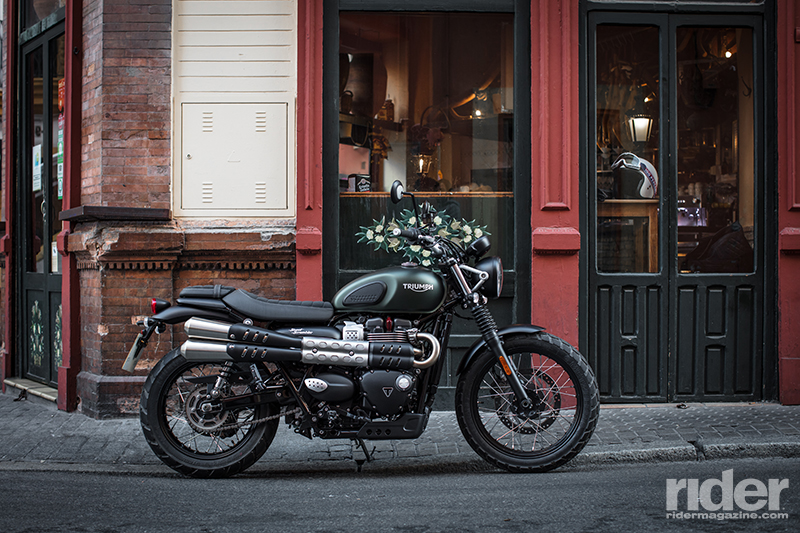
Scramblers were born in the 1960s, and were essentially street bikes that had been modified for dirt racing and general off-road hooliganism. As the decades wore on and manufacturers drilled down and created specialized models for every use and customer—chopper, tourer, sport tourer, enduro, dual-sport, ADV—scramblers became more of a style than a truly dirt-worthy machine. If you wanted a bike that would transition from city streets to single track, there were plenty of DRs, XRs and the like to choose from. Or, if what you really wanted was a knobby-shod, high-piped, pothole-eating, cool street bike, there has been—since 2006—Triumph’s Scrambler.
Read our Rider Comparo of the 2015 Ducati Scrambler & 2015 Triumph Scrambler.
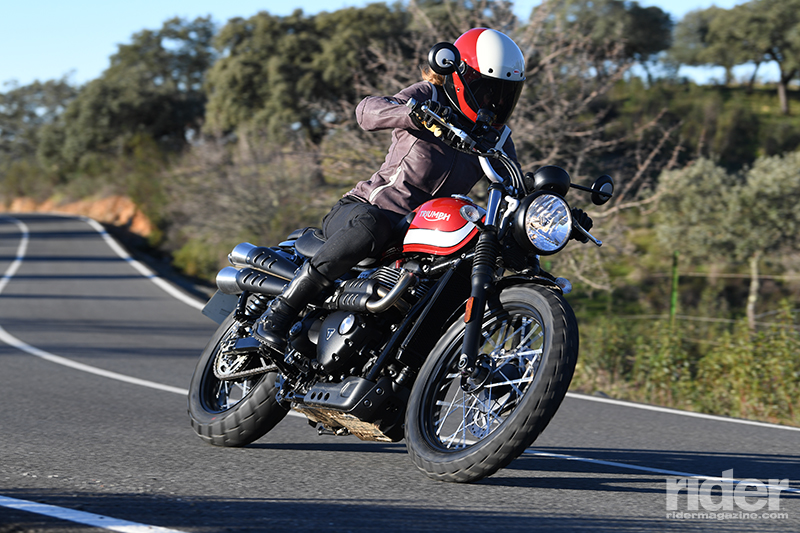
The top-heavy Scrambler, while certainly capable of off-road shenanigans, really needed some significant modifications in order to be truly dirt-worthy. That said, it’s always been my favorite model out of Triumph’s lineup of “modern classics.” So I was looking forward to giving the latest version, the 2017 Street Scrambler, a run at the global launch in Seville, Spain.
The new Street Scrambler is based on the successful Street Twin, launched last year (read our Road Test Review). In fact, Triumph says that of the 68-percent increase in modern classic sales last year, the biggest seller was the Street Twin. The Street Scrambler is powered by the Street Twin’s all-new, 900cc, liquid-cooled “high torque” parallel twin, but with a snarly 270-degree firing interval and unique Scrambler tune. It also shares the Twin’s 3.2-gallon fuel tank, brakes, LED taillight and other bits. Otherwise, however, this is an entirely different animal.
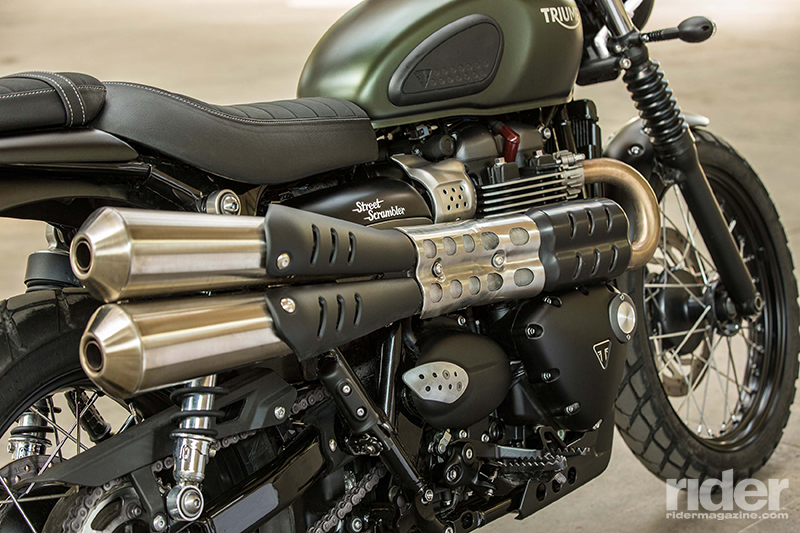
Thanks to its unique tune and throttle mapping, the Street Scrambler is snappier off the line than the Twin, and feels much more playful and fun. Comparing it to its 865cc-powered Scrambler predecessor, the differences become even more pronounced. Triumph claims the new Scrambler makes a claimed 28 percent more power and torque in the “real-world” riding range of 2,750 to 4,750 rpm, although the peak figures of 55 horsepower at 6,000 rpm and 59 lb-ft of torque at a low 2,850 rpm (the previous model reached its 51 lb-ft peak at nearly 5,000 rpm) don’t appear that different. It also features a new ride-by-wire system, with traction control and ABS that can both be disabled for off-road use.
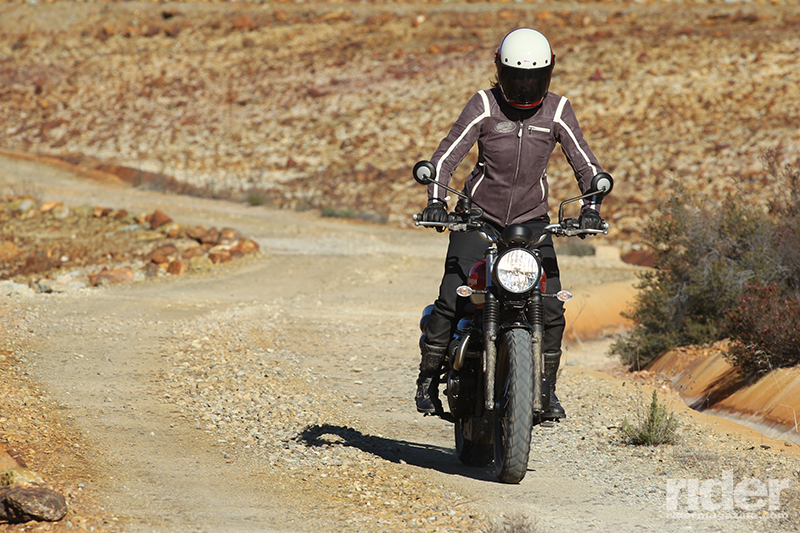
The other major change to the new Street Scrambler is its chassis, which is all new and was designed for better off-road manners and more accessibility. The seat height was reduced from 32.5 inches to 31.2 inches, the rake was sharpened for better maneuverability, the rider footpegs were relocated farther forward and the passenger footpegs are now removable. At 4.7 inches the rear shock has more travel (the previous version had 4.2 inches) and the bike is more compact overall, with a 56.9-inch wheelbase that’s more than 2 inches shorter than before.

The fit-and-finish of the Street Scrambler is admirable, with the liquid-cooled engine still sporting attractive cooling fins and the new two-piece seat featuring contrasting materials and ribbed stitching. The passenger seat is removable and interchangeable with an included aluminum rear rack. The single-dial display packs a lot of information, with an analog speedometer and LCD screen that shows gear position and fuel level, and is switchable between engine speed, odometer, two tripmeters, fuel range, average and instant fuel consumption, time, traction control and ABS settings and the setting for the optional heated grips.
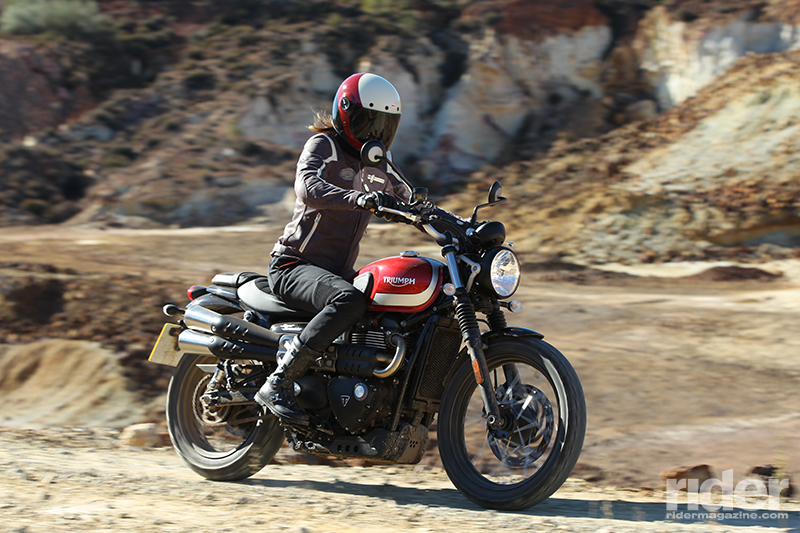
Savvy readers may have noticed that the new Scrambler lost one gallon of fuel capacity. Fear not, as our 2015 Scrambler test bike attained 40.8 average mpg, meaning that with its 4.2-gallon tank it had an estimated range of 171 miles. Even with throttle-happy journalists aboard, the new Street Scrambler with its Euro 4-compliant engine was indicating 59 mpg on its trip computer at the press launch, so it may achieve a fuel range of around 189 miles.
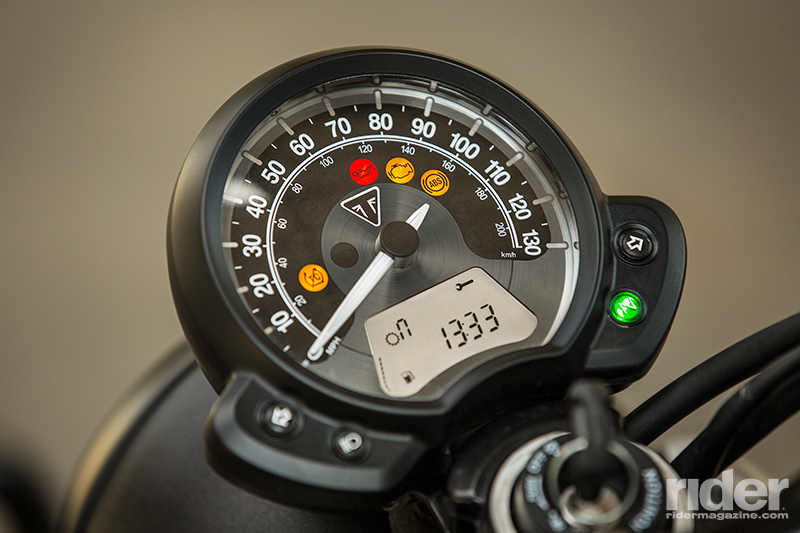
Our short ride through the countryside near Seville allowed us to test the Street Scrambler on highways, technical back roads, mountain sweepers and even a bit of gravelly dirt. Despite its 19-inch front wheel, the new Scrambler was easy to flick through corners—no doubt aided by the wide, tall handlebar. Because of the snappy throttle response, it also proved to be even more fun than the Street Cup we tested the previous day.
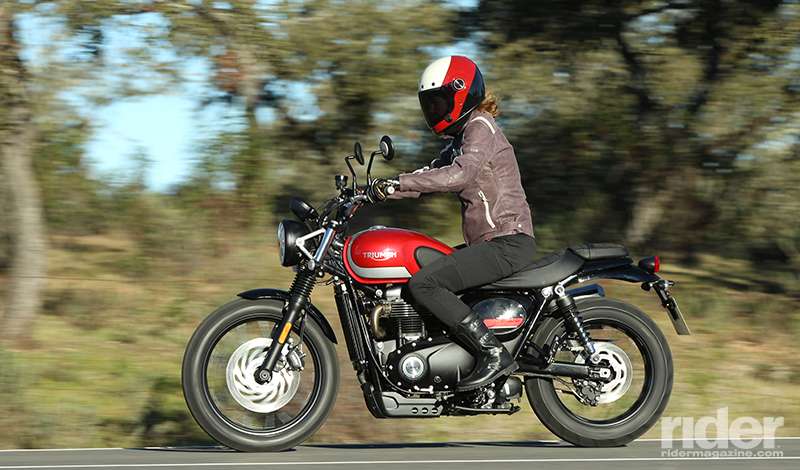
For off-road riding I peeled the rubber inserts off the serrated footpegs—a good thing, as we immediately encountered a 6-inch-deep water crossing. The Metzeler Tourance-shod Street Scrambler handled it confidently, plowing its way up the rocky embankment on the far side and getting properly dirty as we ascended the mountain. Thanks to the repositioned footpegs and tall handlebar, an off-road stand-up riding position was easy to maintain, and the stiff suspension that plagued me on the street now soaked up bumps on the rough fire road.

It could be argued that in today’s world of sophisticated, purpose-built machines, a scrambler doesn’t really need to be off-road savvy; it just needs to look the part. OK, maybe it should also be able to handle a fire road or two…but in all likelihood, the percentage of Street Scrambler buyers who would attempt anything harder than that is small. It’s good to know that this new Scrambler is up to the task, though. Triumph has managed to improve on what I consider to be the quintessential scrambler, making it more fun, more powerful and more capable than ever before. I’m looking forward to getting one for a long-term test.
The 2017 Street Scrambler will be available in February, and is priced at $10,700 for Jet Black, $10,950 for Matte Khaki Green and $11,200 for Korosi Red and Frozen Silver.

2017 Triumph Street Scrambler Specs
Base Price: $10,700 (Jet Black)
Website: triumphmotorcycles.com
Engine Type: Liquid-cooled, 270-degree crank angle parallel twin, SOHC, 4 valves per cyl.
Displacement: 900cc
Bore x Stroke: 84.6 x 80mm
Transmission: 5-speed, torque assist, wet multi-plate clutch
Final Drive: X-ring chain
Wheelbase: 56.9 in.
Rake/Trail: 25.6 degrees/4.3 in.
Seat Height: 31.2 in.
Claimed Dry Weight: 453 lbs.
Fuel Capacity: 3.2 gals.
MPG: NA


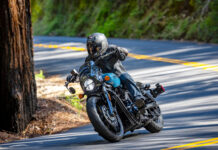





A couple things.
1. In one part of the article, the fuel capacity is listed as 3.2 gallon in another range is calculated based on 4.2 gallon.
2. Engines make power. Engine torque is an extraneous thing that really doesn’t concern riders. We use our gearboxes to apply torque at our rear wheel. And although a discussion of power based only at an engine speed or two is pretty useless, an engine making 51 ft*lbs at 5k rpm is making a lot more power than one making 59 ft*lbs @ 2.8k rpm.
1. I have Street Twin, same great engine with huge torque. You can expect about 3l/100km speed 60-70km/h, about 4l/100km speed 90-100km/h and obout 4.5-5l speed 110-130km/h (all on 5th gear without any problem).
2. I was looking for a compact bike, narrow, easy to ride in traffic, with low fuel consumption, bike with big torque on low rpm. This is much more important for me. I’m using bike everyday.
And there is 12l in the tank….forgot to ad 🙂
Still has that low set rear brake caliper – about time they re-mounted that high out of the way.
Why does Triumph do this to a loyal Triumph rider like me?First I saw the new Bobber,now this great Scrambler.I love my 2010 T Bird,and my 2014 America LT.Now which one of these two beauties will I add on to my stable?Could be the ….which one?
Hi! how tall is she? I´m looking to buy one but I´m 6´2″, seems like a very compact bike, is it?
Hi! It’s smaller overall than the previous Scrambler, with a 31.2-inch seat height. There was one tester in my group who was about 6’2″, and he seemed to be comfortable. That said, I would recommend sitting on one at your local dealer, or better yet, take one for a test spin. -Jenny Smith, Managing Editor
It’s unfortunate that Triumph has decided to make it more difficult and expensive for their dealerships to continue carrying that brand. Two dealers near me recently dropped them, I guess I won’t be looking at the new scrambler.
When they come out with a 1200 Scrambler, I’ll buy one…
Break out your wallet, it’s on it’s way.
I have one. Put 1500 miles on her. Love this Triumph!